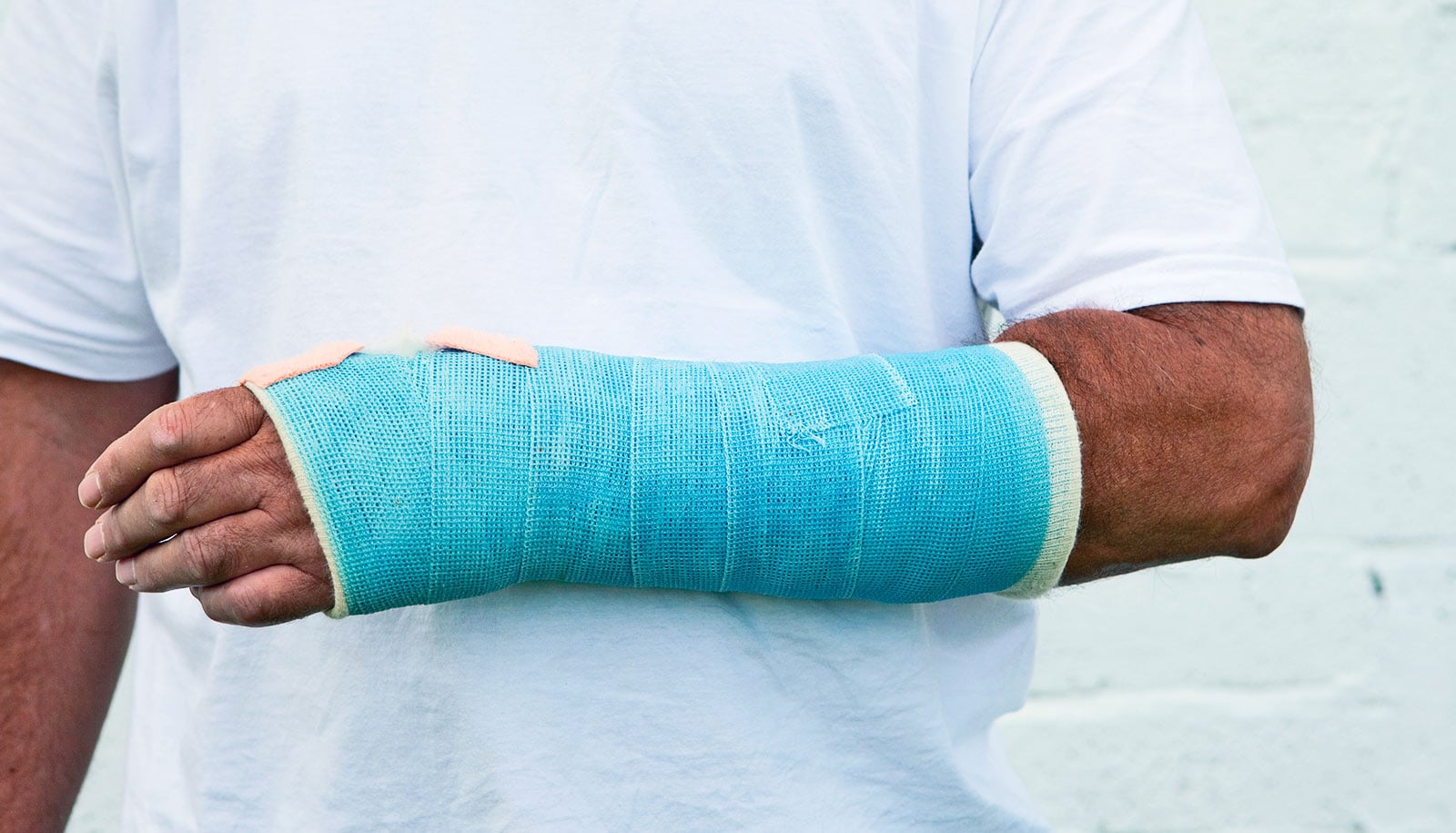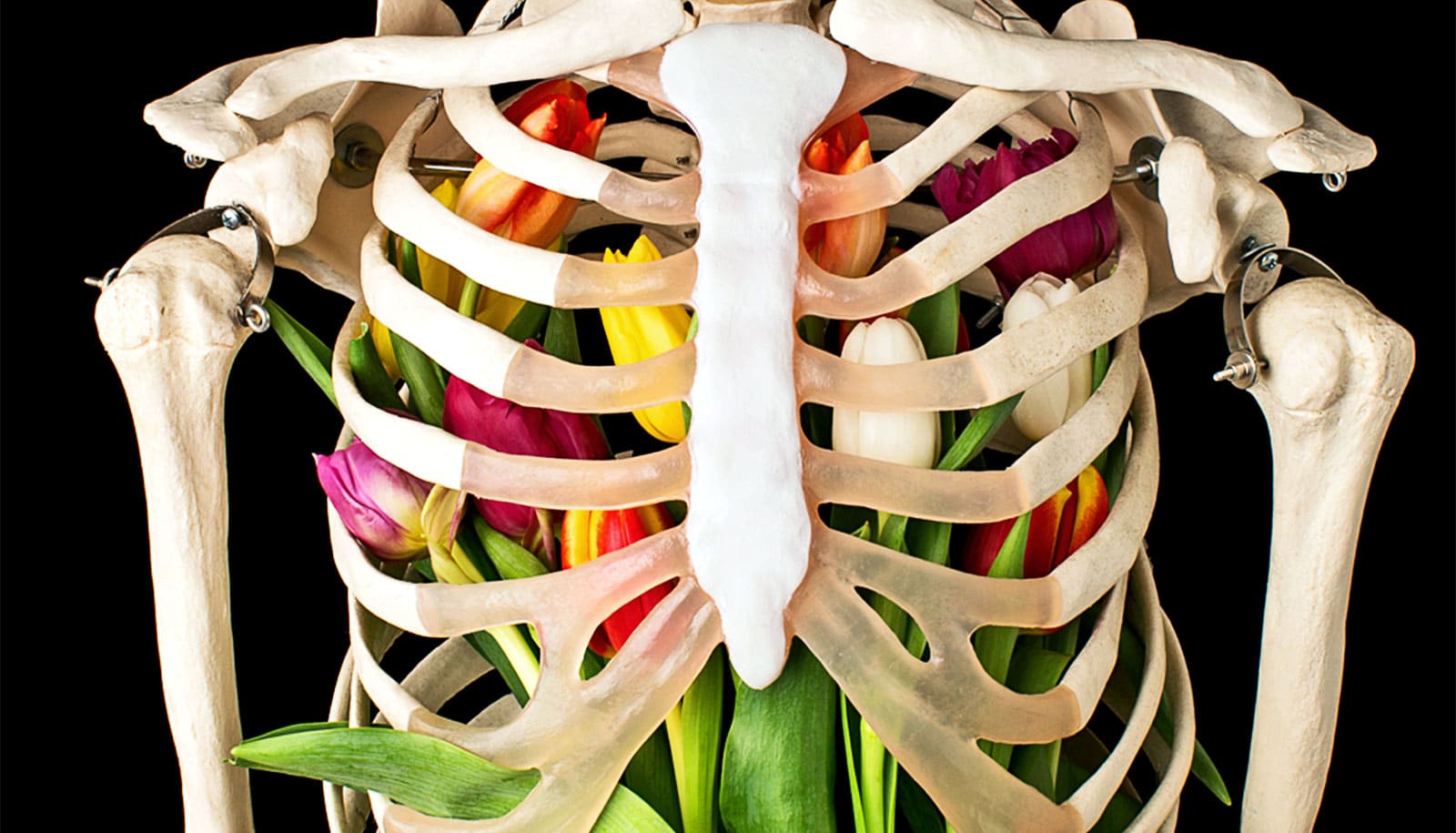Instead of bulky metal plates and screws, bone fractures might someday be healed via targeted, controlled delivery of a specialized bone-growth protein, researchers report.
The researchers have developed a system to get that protein to the site of injury and release it gradually over time.
Their approach uses small proteins called affibodies, which can be specially engineered to grab onto specific other proteins and release them at different rates.
The team reports their results in Advanced Healthcare Materials.
Healing is a complex biological process, with many different proteins at the site of injury aiding in regeneration. “This initial proof of concept shows we can release things at different rates, like other proteins, to mimic how the bone would naturally regenerate,” says Jonathan Dorogin, a graduate student in Marian Hettiaratchi’s lab who led the design. Hettiaratchi is an assistant professor in the University of Oregon’s Phil and Penny Knight Campus for Accelerating Scientific Impact.
One of these many healing-related proteins is bone morphogenetic protein-2, or BMP-2. Early in development, it helps bones form. And when someone breaks a bone, cells around the site of the fracture secrete this protein to help new bone grow. Recently, scientists and doctors have been interested in giving patients infusions of BMP-2 as a treatment to hasten healing.
But BMP-2 is so powerful that it can easily lead to off-target effects, causing bone growth where it’s not wanted and leading to unexpected complications.
Hettiaratchi and her colleagues have been trying to develop a more controlled strategy. Affibodies piqued the lab’s interest as a possible solution because they’re small and relatively simple to engineer, Hettiaratchi says. These molecules are cousins to antibodies, immune system molecules that selectively latch onto bacteria or viruses. But affibodies’ pared-down size makes them easier to generate in the lab. And because they’re engineered to be highly specific to the proteins they’re sticking to, there’s less risk of them interacting with other things they’re not supposed to in the body.
The team screened a set of affibodies by testing how well they stuck to BMP-2, looking for molecules that would stick solidly but still release the protein under the right conditions. As candidate for further testing, they picked one affibody that stuck to BMP-2 more strongly, and another that had a weaker connection.
They linked those affibodies with a squishy material called a hydrogel, which is often used as a delivery vehicle in the body for BMP-2 and similar treatments. Then, they tested how the whole package behaved in a liquid solution that mimics the environment inside the body.
Adding affibodies to the hydrogel made it release BMP-2 more slowly than an affibody-free hydrogel, the researchers found. And changing up the affibodies could alter the rate of release, too.
“Our innovation has been to control when the protein comes out,” Dorogin says.
In collaboration with colleagues in the lab of Knight Campus researcher Parisa Hosseinzadeh, the team also used machine learning to better understand how the affibodies were interacting with BMP-2.
Hettiaratchi and Dorogin anticipate the work will be most useful for severe or complex fractures, where there’s a higher likelihood of a bone not healing correctly. They’ve filed a patent for the design of this BMP-2 delivery strategy, and are moving on to further testing with the hopes that someday, this tunable approach could be used in human patients.
They see affibodies as far more than just a platform for BMP-2 delivery, though. Healing is complicated, and the natural process involves a cascade of different molecules rushing to the site of injury at different times and in different quantities.
Hettiaratchi ultimately envisions an affibody-based system that could deliver many healing-related proteins to the site of an injury, each one tuned to come in at a specific rate depending on when it’s needed during the healing process.
“BMP-2 was a great protein to start with, because we knew it would be clinically relevant,” Hettiaratchi says. “But the long-term goal is to apply this to many things in the clinic.”
Funding for the research came, in part, from the Department of Defense and the National Institutes of Health. The team also received a pilot grant from the Collins Medical Trust.
Source: Laurel Hamers for University of Oregon



